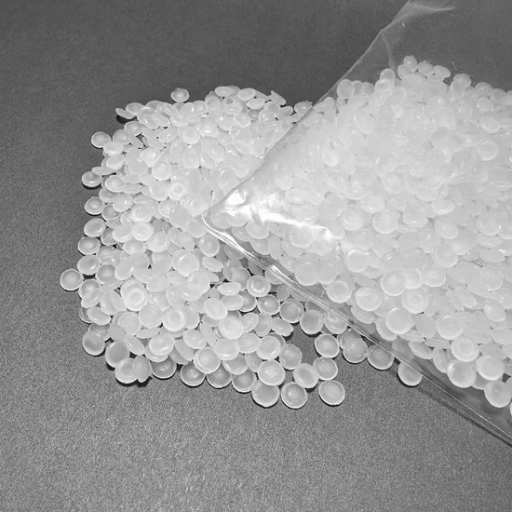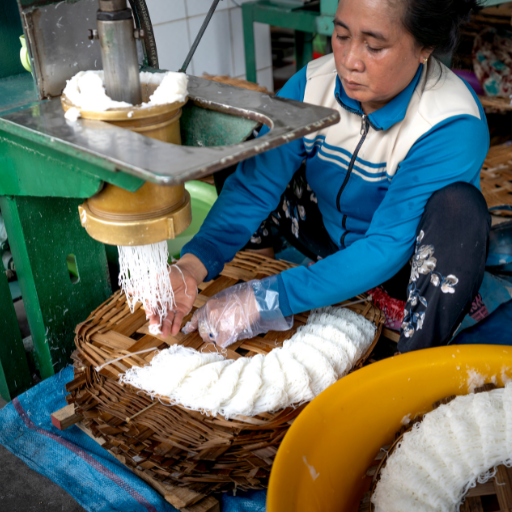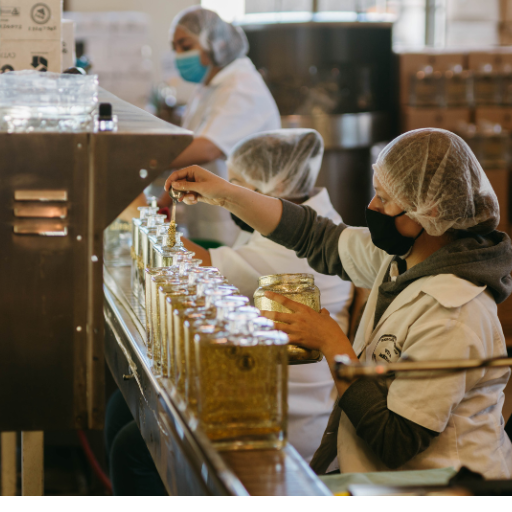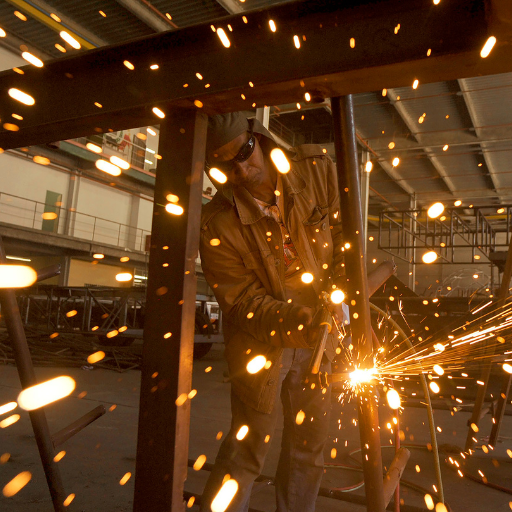From all modern materials used in various industries, PFA resin is arguably one of the top ones for consideration. It is useful in applications where reliability and performance are essential because of its unparalleled resistance to chemical exposure, thermal stability, and its non-stick properties. But why is PFA resin valued this much? In this article, we will look at its properties, the industries that utilize these, and modern ways of applying them. As strong, sophisticated materials capture the imaginations of professionals from multiple industries, this extensive guide will provide lesser-known details regarding PFA resin and help understand the modern tech world.
What is PFA resin?

PFA resin, also known as perfluoroalkoxy, is a certain type of fluoropolymer. Like all other types of fluoropolymers, PFA possesses benefits such as chemical resistance, extreme temperatures non-stickability and non-stickability. Due to these characteristics, PFA is often utilized for demanding tasks like piping, coatings, and semiconductor manufacturing. Moreover, PFA’s flexibility and processability allow for it to be molded into intricate shapes with PTFE-like precision.
What are the key characteristics of PFA resin?
PFA resin, or Perfluoroalkoxy alkane, has unique properties that make it particularly useful for demanding industries. Some of these characteristics are listed below.
- Exceptional Chemical Resistance
PFA resin also boasts other unique properties, alongside being chemically resistant to a variety of acids and solvents. Its wide range of resistance means it can withstand severe substances without breaking down.
- High-Temperature Stability
PFA resin’s thermal stability is outstanding, performing maximally at 260°C (500°F). Extreme temperatures and cryogenic environments do not compromise its structural integrity and performance.
- Non-Stick Surface
PFA resin is useful in coating applications, food processing equipment because, much like PTFE, it has exceptional anti-adhesive properties.
- Enhanced Flexibility and Processability
Compared with PTFE, PFA resin has better processability and flexibility. It can be extruded or molded into complex and exact form which is useful for particular design requirements.
- Electrical Insulation
PFA resin has exceptional dielectric strength and retains reasonable electrical insulation even in arduous operating conditions.
- Low Permeability
Gas and liquid permeability of PFA resin is extremely low, making it ideal for use where containment, as well as purity, is essential such as semiconductor and pharmaceutical manufacturing.
- UV and Weather Resistance
PFA resin is also resistant to ultra violet light exposure as well as harsh weather conditions and, therefore, does not lose its physical or chemical properties which makes it useful for outdoor uses.
The blending of these properties makes PFA resin a tough and flexible material, extensively employed in areas spanning from aerospace to medicine.
How is PFA different from other fluoropolymer resins?
Among other fluoropolymer resins, PFA (Perfluoroalkoxy alkane) is distinguished by its characteristics and composition. Unlike the more challenging PTFE (Polytetrafluoroethylene) from a processing perspective, PFA’s exceptional melt-processability allows it to be fabricated through extrusion and injection molding. PFA can therefore be processed into complex shapes and thin-walled components more easily.
Moreover, PFA’s flexibility at the extremes of temperature is remarkable as it retains strength and functionality from -200°C to 260°C, outdoing FEP (Fluorinated Ethylene Propylene), which has a wider resistance range than FEP. In addition, PFA offers greater chemical resistance than FEP even in other hostile environments and is heavily used in industrial applications for strong acids, bases, and solvents.
It is the electronics and telecommunication sectors that PFA’s exceptional dielectric strength makes a great fit, while its low gas permeability eliminates the gap with ETFE (Ethylene Tetrafluoroethylene), making it preferable where gas-tight seals are needed. Such properties are why PFA is preferred in the semiconductor fabrication industry, which depends on precision and reliability, showcasing why PFA is crucial for these industries.
What are the primary uses of PFA in industrial applications?
Due to its non-stick properties and high temperature stability, PFA (Perfluoroalkoxy Alkane) holds immense importance across many global industries. The semiconductor industry relies on PFA as it manufactures high purithy tubing, fittings, and chemical containing vessels, while PFA’s resistance to chemical abrasions ensures no contamination occurs during storage or transport for sensitive processes.
PFA is also widely used in the chemical processing industries for safeguarding pipes and vessels, acting as a shield against corrosion from aggressive acids and solvents. Its rate of reliability in ultra cold and hot temperatures, which reaches between -200’C to 260’C (-328’F to 500’F), makes it an ideal candidate for the components of heat exchangers in harsh conditions.
PFA is widely used in the pharmaceuticals and biotechnology sectors as it non-reactive and non porous, ensuring sterility and non chemical interaction in healthcare equipment. PFA’s effectiveness for coating pots and labware, in addition to being an excellent adhesive, can be attributed to its non-stick properties.
Research estimates indicate the global fluoropolymer coatings market -including PFA- will grow significantly due to rising industrial demand. This trend underlines the increasing significance of PFA in modern industrial operations as a multifunctional and extraordinary material.
What are the benefits of using PFA in manufacturing?

PFA provides various advantages in manufacturing, which make it an asset:
- Non-stick properties: prevents materials from adhering to the oven and pan surfaces and is useful in industrial as well as cookware coating processes.
- High heat resistance: PFA can withstand very high temperatures, which ensures suitability in very hot places.
- Chemical resistance: Adequate for use in critical chemical conditions due to its resistance towards extreme chemicals.
- Flexibility and durability: Sufficiently strong, yet flexible for use in demanding, high-precision manufacturing processes.
- Electrical insulation: provides sufficient insulation, which is relevant in Electronics.
These attributes increase the effectiveness and dependability of numerous processes in the manufacturing industry.
How does PFA resin provide chemical resistance?
PFA resin is known to chemically resist attacks from strong acids, bases, and organic solvents due to its molecular structure with fluorine atoms bonded to carbon. As the carbon-fluorine bond is one of the strongest in organic chemistry, it provides protection from chemical attacks, even from the most aggressive chemicals. Nonreactive and low surface energy characteristics further aid in the prevention of substances from mechanically adhering to the surface of the PFA resin, enhancing its resistance even further.
Material testing and studies have proven that PFA resin retains its mechanical properties and chemical structure while withstanding extreme temperatures of 260°C (500°F) and corrosive chemicals such as hydrofluoric acid and chlorine gas. For these reasons, it is extensively used in the semiconductor, pharmaceutical, and chemical processing industries, as these applications require the materials to retain their properties under difficult conditions. These characteristics provide dependable and durable performance in extreme conditions and demanding applications.
What makes PFA suitable for high-temperature applications?
- High Thermal Stability
-
-
- PFA retains both its mechanical properties and chemical integrity up to 260°C (500°F). This makes it useful in applications and environments where consistent performance is needed at higher temperatures.
-
- Non-Stick Properties
-
-
- PFA has extremely non-stick properties, which allow it to be used in more efficient ways in processes containing heat and viscous materials.
-
- Exceptional Chemical Resistance
-
-
- PFA also resists corrosion and degradation due to highly aggressive chemicals such as hydrofluoric acid, chlorine gas, and other organic solvents even at elevated temperatures.
-
- Low Permeability
-
-
-
Due PFA`s structure even at very high temperatures gas and liquid permeabilities are low, preventing leaks or contamination within critical systems.
-
-
- Long-Term Durability
-
-
- The thermal stability plus chemical resistance makes PFA withstand long exposure to harsh situations, making it reliable for use in demanding industrial applications.
-
- Electrical Insulation Properties
-
-
- Low dielectric strength loss with high temperature guarantees effective performance within electrical and electronic systems, which makes PFA useful in many electrical systems, further protected by PFA’s insulation properties.
-
- Wide Range of Applications
-
-
-
Due to their extreme endurance of high temperature, PFAs are commonly used in fields like semiconductor manufacturing, chemical processing, and aerospace engineering.
-
-
What are the benefits of using PFA in manufacturing?
Perfluoroalkoxy (PFA) provides a great number of advantages in thermal applications which is why different industries tend to prefer it. One of the most important advantages for PFA is its remarkable chemical resistance. It can stand the effects of some of the most aggressive chemicals like acids, bases, and solvents without being destroyed. This is why PFA is widely used in the components of chemical processing systems.
Another added advantage of this is its resistance to high temperatures. PFA can perform its mechanical properties and structural integrity from -200°C (-328 °F) to 260°C (500°F) which is great for severe thermal conditions. In addition to that, with PFA being non-stick, materials do not adhere to it which reduces cleaning time and increases efficiency further hugely.
For these reasons as well, PFA offers great dielectric strength and flexibility, thus enabling it to be constructed into thin and complex devices for a range of electrical and electronic applications in harsh environmental conditions. Their strength and shape retention allow such devices to be operational for long periods of time.
To conclude, PFA makes the products more efficient, able to endure harsh environmental conditions, and increases the operational lifespan which is beneficial to numerous sectors like semiconductors, pharmaceuticals, automotive, and spacecraft manufacturing.
How is PFA produced and processed?

PFA is made by efficiently copolymerizing tetrafluoroethylene (TFE) with perfluoroalkyl vinyl ether (PFAVE). Precise conditions are maintained during the process to achieve appropriate material properties. Once produced, PFA undergoes initial fabrication through aftermarket processes like extrusion, injection, and blow molding. These processes enable the sculpting of the material into myriad shapes while maintaining its resistance to chemicals and flexibility in its mechanical properties.
What are the common methods for molding and extrusion of PFA resin?
PFA resin is highly sought after in industrial uses because of its remarkable resistance to chemicals and thermal stability, as well as its non-stick qualities. PFA requires advanced injection molding and extrusion techniques for functional design. These are:
- Injection Molding
Injection molding is one of the most popular methods of creating complex components from PFA resin. It offers high precision and accuracy while providing an efficient workflow. It consists of heating the PFA until it is in a molten state, after which it is injected with great force into a mold cavity. The injection molding technique would suit the production of detailed and complex components such as valve liners and tubing connectors. The processing temperatures of PFA are low, resulting in low viscosity, which aids PFA in filling molds designed for high-performance applications.
- Extrusion
Extrusion refers to the process of melting PFA resin, then forcing it through a die of the desired shape to produce long pieces with a specific cross-section, such as continuous profiles, tubing, or wire. This technique is commonly used for industrial-grade tubing, coatings that resist chemicals, and wire and cable insulation. Due to the high temperatures in extrusion, PFA’s thermal stability is very important as it offers structural integrity, which is critical during this phase. There are several continuous extrusion processes and techniques, allowing for different approaches to complete the product, such as medical tubing,g while achieving a flawless finish.
- Compression Molding
Where chemical resistance is important, compression molding can be utilized to manufacture thicker or larger PFA pieces. A preprocessed PFA part is placed in the heated mold cavity, and the required form is achieved by applying pressure and heat using a press, causing the PFA to melt. Parts of seals and pump housings for chemical processors are best produced by this method.
- Rotational Molding
The process of rotational molding consists of covering the inner surface of a mold with PFA powder and spinning it on multiple axes. The heating and rotation form hollow features within the mold cavity that have a specified uniform thickness. Storage tanks used to store different kinds of chemicals require liners that are resistant to corrosion and chemical attacks. This method of rotational molding is also useful in making the storage tank linings.
- Transfer Molding
Encapsulation of metal components with PFA resin is best suited for Transfer molding. The heated resin is poured into the mold cavities which are located around the metal inserts. This method is quite popular for making valves and fittings of high-end performance.
Using these specialized processing methods provides the unique advantages of PFA resin for the more demanding fields of semiconductors, chemical processing, and even healthcare.
What are the challenges in chemical processing with PFA?
PFA (Perfluoroalkoxy) is known to have unparalleled impact resistance of chemicals and thermal stability; however, it does face some issues while being used in chemical processing. One concern is the relatively expensive cost of the material when compared to other fluoropolymers, which increases production costs for large-scale industrial operations. Moreover, the extremely high melting point of the resin and requirements on molding techniques to preserve the shape and integrity of the resin require specialized equipment and skill for molding and processing.
PFA’s discrimination while compared to its polymer counterparts makes it more difficult to use in regions where the parts undergo continuous stress due to highly mechanical forces, posing thermodynamic alterations. Exacerbating the situation are fracturing or altering mechanical stress which further push the boundary of where PFA can efficiently be used. Countering these disadvantages, PFA does perform to moderate expectations in terms of barriered porous materials capable of being permeated while under attack by hostile chemicals or harsh contact with various aggressive gases.
From the stiff perspective of manufacturers, PFA does come with a downside; problems posed by environmental energy while being processed, along with the consumption of materials like fuel and energy, force tougher boundaries outside the perimeter of PFA processing, creating an energy-related standpoint.
Undeniably, these hurdles serve as obstacles towards advancing in material formulation as well as improving the methods employed for processing PFA, which in the long run aims to enhance the overall cost and efficiency of chemical processing scenarios.
What industries benefit from PFA fluoropolymer?

Industries that are serviced by PFA fluoropolymer include:
- Chemical processing: Applied as corrosion protective linings, piping, and vessels.
- Semiconductor manufacturing: Best suited for high-purity parts and has excellent resistance to chemicals.
- Pharmaceutical and biotechnology: Used for applications needing high cleanliness levels and resistance to aggressive, reactive chemicals.
- Aerospace: Needed for low-weight, high-strength, long-lasting heat-resistant components.
- Food and beverage: Offers non-stick surfaces to equipment and packaging, and hygienic cleanliness.
How is PFA used in the semiconductor industry?
Perfluoroalkoxy alkanes, or PFA, keeps gaining market traction due to their superlative properties detailing resistance to chemicals alongside purged mechanical stress. These elements are widely used within the Industry in systems intended for semiconductor processes, such as chemical delivery systems, processing equipment, and components meant for wafer handling.
Another one is, PFA’s primary fitments also include highly pure fluid’s handlings systems of pipes, tubings and others. Of these two doped substances into the semiconductor components, the PFA ensures non-reactive and smooth surface whilst the semiconductor protects intelligent devices realizing solutions in huge volumes during etching, cleaning and later photolithography cycles.
Demand statistics alongside these devices suggest the PFA market share associated with specific semiconductor usage has been growing significantly with these designers increasing their ProFA diversification. The polymer’s particular strength enables cleanroom exposure to severe life forms of upwards from 500 degrees Fahrenheit or 260 degrees Celsius.
In addition, PFA coatings are routinely used in equipment like tanks and containers to inhibit the deposition of particles or corrosion resulting from strong acids. This increases process dependability and mitigates the likelihood of failures in microchip manufacturing. The incorporation of PFA helps the manufacturers to increase their yield and reduces the semiconductor industry’s demands, particularly as the production nodes are scaled down to the nano level.
With these applications, PFA has emerged as vital in boosting innovation and efficiency across the processes of semiconductor manufacturing.
What are the roles of PFA in corrosion resistance?
The PFA (perfluoroalkoxy) resin is important for improving corrosion resistance in harsh environments where aggressive chemicals, extreme temperatures, or high pressure are present. PFA resins have an exceptional chemical inertness, which allows them to retain integrity even when subjected to strong acids, bases, or organic solvents, making them ideal for linings and coatings in chemical processing, semiconductor manufacturing, and pharmaceutical industries.
Research shows that the PFA outperforms other materials like stainless steel and other polymers with regard to corrosion resistance. For instance, components coated with PFA are capable of long-term exposure to HF and sulfuric acid without risk of structural or contamination damage. PFA’s non-stick nature, along with low permeability, further limits chemical invasion or degradation of chemicals.
Performance within a broad scope of temperatures (-196°C to 260°C ) ensures that the material will maintain reliable corrosion resistance under extreme thermal cycling conditions. Chemical and thermal resilient industries greatly benefit from using PFA as it decreases maintenance, increases equipment lifespan, and provides safety when dealing with hazardous materials.
What are the environmental concerns surrounding PFA?

PFA (perfluoroalkoxy alkane) is environmentally concerning because of its relationship with PFAS (per- and polyfluoroalkyl substances), which are known to be persistent in the environment. Out of the many substances in the ecosystem, some cannot be broken down easily over time, contributing to deposition within an ecosystem… Additionally, because PFAS are so difficult to break down, this can lead to the contamination of soil, water, and air, which ultimately harms animal life. If intercepting the human food supply. Also, if PFA is poorly managed during production, they they may cause pollution and other environmental damage. Reducing reliance on PFAS-related materials is being tried to alleviate some of these impacts.
What is the relationship between PFA and PFAS?
PFA is an example of a fluoropolymer and specifically falls under the subclass of PFAS (Per- and polyfluoroalkyl substances). PFA is a Newer PFAS compounds which undergo purposeful design for specific functions. PFA, like other per- and poly-fluoro compounds, possesses unique solubility and very strong carbon-fluorine bonds, which make them impervious to damage or unraveling from changes in temperature, liquids, or oil. In comparison to other compounds under the same group of PFAS, PFA is reliably designed for industrial use as it is very cost-efficient when it comes to thermal and chemical resilience.
Apart from the industrial applications, PFA and other PER- and POLY-fluorinated compounds’ atomic structures have provoked worries concerning the degradation of PFA in the environment. PFAS are routinely referred to as “forever chemicals” due to their longevity and inability to disintegrate, which leads to their build-up in soil, water, and even organisms. Some studies have recently surfaced detailing that some PFA precursors are capable of binding with water systems, which include measurable quantities in places like drinking water across the world. Studies suggest that over 200 million people in the USA alone are exposed to drinking water containing PFAS beyond accepted safety levels.
Even though PFA is classified as relatively safe and inert in controlled industrial environments, its production, as well as the degradation of associated PFAS compounds, leads to environmental pollution. This fact advocates for enhanced regulations and more efforts to mitigate the impact of fluoropolymer manufacturing on ecosystems.
How does PFA impact environmental safety?
The consequences of PFA and similar PFAS compounds on environmental protection are multi-faceted. As they are often referred to as “forever chemicals,” PFAS are chemically stable and unlike to undergo degradation, which also makes them highly persistent in the environment. It has been shown many scientific studies have shown that PFAS is a contaminant found not only in soil and waterways but also in air. An astonishing 98% of the global population is believed to have PFAS in their body in some form, either aplastic, aqueous, or gaseous, due to its ubiquitous sources via water and food, as presented in new research.
Another issue of environmental importance is the accumulation of PFAS in biological systems and wildlife. PFAS has been found in fish and other wildlife residing in marine bodies of water, which affects the food web and biodiversity, and is of concern to marine ecosystems. PFAs can also migrate out of landfills or waste sites through seepage into groundwater, and endanger fresh water and well supplies. This case is alarming because, EPA, the American Environmental Protection Agency, warned other countries that PFOA and PFOS PC do not exceed Phase out Levels of 0.004 and 0.02 parts per trillion for PFOA and 0.02 for PFOS, otherwise public health will be threatened.
To mitigate environmental challenges, focus is being placed on new materials and the advancement of remediation technologies. Certain methods, including activated carbon filtration, advanced oxidation processes, and reverse osmosis, may be effective in reducing PFAS concentrations at contaminated sites. Nevertheless, effective management of PFAS pollution requires global collaboration, robust policy implementation, and greater funding for more environmentally friendly options.
What are the future trends for PFA in technology?

Future trends in technology for PFAS (per- and polyfluoroalkyl substances) are concentrated on:
- Development of Safer Alternatives: Efforts are being made to develop safe substitutes for materials such as firefighting foams, nonstick coatings, and textiles that use PFAS.
- Improved Detection Methods: Greater precision in PFAS detection in water, soil, and other surroundings is possible thanks to advances in analytical technology, improving monitoring and regulatory control.
- Innovative Remediation Technologies: Newer techniques like electrochemical treatment and bioremediations are being researched to efficiently and effectively break down PFAS compounds and reduce their environmental footprint.
These developments look towards reducing reliance on PFAS while at the same time solving the problems posed by these chemicals on the ecosystem.
How is PFA evolving in terms of electrical properties?
Recent advancements concerning the electrical properties of Perfluoroalkoxy alkane (PFA) have made it more useful in high-performance fields. PFA’s tremendous strength as a dielectric medium, small dielectric constant, and great volume resistivity guarantee that it remains functional in systems with extreme electrical requirements.
These developments include the further refinement of existing characteristics. For example, the PFA manufacturing techniques have been refined to reduce surface imperfections. This enhances the material’s ability to withstand breakage under high voltage. Also, newer techniques in blending polymers have made it possible to create different versions of PFA with specific conductivity levels, which can be tailored by engineers for certain uses such as semiconductors or cable insulation.
Other studies have also focused on PFA and point out its performance under severe thermal and electrical stress by disclosing that PFA retains its efficiency within numerous operational extremes. Its capacity to endure eroding electric currents and insulation failure under high frequency makes PFA a very useful industrial material. Emerging materials research data suggest the latest formulations of PFA also deliver significantly lower leakage currents during operation compared to previous versions, optimizing the performance of critical systems.
The updates address the increasing need for the reliability and performance of new technologies; this demand further improves PFA’s capabilities as a material for modern electronic and electrical use.
What innovations are being made in PFA applications?
One important technological advancement has been the development of improved formulations that enhance the thermal stability and chemical resistance of PFA. This, and other advancements, make the material suitable for more extreme environments. Enhanced manufacturing techniques also have a hand in making PFA suitable for advanced medical devices and semiconductors due to precision molding and advanced coating technology. These improvements enable PFA to meet the evolving needs regarding performance and dependability in advanced applications.
Reference Sources
- Study: “A Review of the Polymer for Cryogenic Application: Methods, Mechanisms and Perspectives” (2021)1
- Key Findings: This study focuses on the cryogenic applications of polymers, including PFA resin. It highlights the mechanical and thermal properties of PFA, emphasizing its suitability for extreme environments like aerospace. The research also discusses the modification techniques to enhance PFA’s performance under cryogenic conditions, such as introducing nanomaterials like carbon nanotubes and graphene.
- Methodologies: The study reviews existing literature, experimental data, and case studies on polymer modifications for cryogenic applications. It also proposes future research directions for improving polymer performance in such environments.
- Study: “Review of Technologies and Materials Used in High-Voltage Film Capacitors” (2021)2
- Key Findings: This paper explores the use of PFA resin in high-voltage film capacitors, focusing on its dielectric properties, thermal stability, and resistance to environmental factors. PFA’s role as a dielectric material in enhancing capacitor efficiency and reliability is emphasized.
- Methodologies: The research compiles data from various studies on capacitor technologies, analyzing the performance of PFA and other polymers in high-voltage applications. It also discusses advancements in manufacturing techniques and material treatments.
- Top PFA Resin Suppliers in China
Frequently Asked Questions (FAQs)
Q: What is PFA resin, and what are its key properties?
A: PFA resin, or perfluoroalkoxy polymer, is a type of thermoplastic fluoropolymer known for its high purity, outstanding chemical resistance, and excellent properties, including low friction and flexibility. It has a fluorine-carbon bond within the PFA polymer chain that contributes to its unique characteristics.
Q: How does PFA material compare to Teflon?
A: Teflon™ PFA is a specific type of PFA material that shares many properties with Teflon, including high performance and resistance to chemical corrosion. However, PFA offers greater flexibility and can be used in applications requiring a thermoplastic that can be processed easily.
Q: What applications are suitable for PFA resins?
A: PFA resins are commonly used in industries requiring high performance and resistance to chemical stress, such as the chemical processing, pharmaceuticals, and food industries. They are ideal for applications that involve high service temperature and require flame resistance.
Q: Can PFA products be processed like conventional thermoplastics?
A: Yes, PFA resins can be processed using conventional thermoplastic methods, making them versatile for various manufacturing applications. This processing capability allows for the creation of complex shapes and forms in PFA products.
Q: What are the advantages of using PFA over other fluoropolymers?
A: PFA offers several advantages, including high purity, excellent properties such as low friction, and superior chemical resistance. Its flexible nature allows it to be used in applications where flexibility is crucial, unlike some other rigid fluoropolymers.
Q: What is the service temperature range for PFA materials?
A: PFA materials can typically withstand service temperatures up to 260°C (500°F), making them suitable for high-temperature applications without compromising their chemical resistance and mechanical properties.
Q: How does the chemical resistance of PFA compare to other materials?
A: PFA exhibits outstanding chemical resistance, making it ideal for preventing chemical corrosion in harsh environments. It can withstand a wide range of chemicals, including strong acids and bases, which many other materials cannot tolerate.
Q: What is the significance of the fluorine-carbon bond within the PFA polymer?
A: The fluorine-carbon bond within the PFA polymer is crucial as it imparts exceptional properties such as low surface energy, high thermal stability, and excellent resistance to environmental degradation, making PFA suitable for diverse applications.
Q: Is PFA resin environmentally friendly?
A: While PFA resins are highly durable and resistant to degradation, their environmental impact depends on disposal methods. However, the high performance and longevity of PFA products can lead to less frequent replacements, potentially reducing waste over time.

